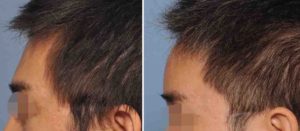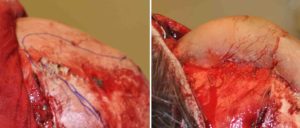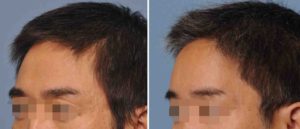Background: The projection of the forehead plays a significant role in the appearance of the upper third of the face. If it is sloped too far backward, it will make the brows appear more prominent and create a high or elongated hairline. If it is too far forward it appears too prominent and oversized for the face.
Augmentation of the forehead, in my experience and opinion, is best done using an implant made from the patient’s 3D CT scan. This has largely replaced the use of bone cements which are less accurate in terms of achieving the ideal shape, take more intraoperative time to do so and require a much longer scalp incision to to properly place them. But in certain patients, bone cement forehead augmentation still has a role to play.
In the use of bone cements as an onlay application on any part of the skull, there are two options. PMMA or polymethylmethacyate has been round for most fifty years and while improvements have occurred in its formulations (faster set times, less heat generated) it remains a synthetic plastic material which still develops a thin capsule between it and the bone. Hydroxyapatite (HA) bone cements have now been around for twenty-five years and its synthetic hydroxyapatite crystals do create. a direct bond to the bone with a scar interface. While that has a lot of appeal, HA bone cements are considerably more expensive than PMMA and that is of relevance in large volumes that are needed in the forehead as well as being an elective aesthetic procedure that is not covered by insurance.
Case Study: This Asian male desired forehead reshaping with the goal of increased projection and a rounder shape. Because he was having other skull reshaping procedures done, a coronal scalp incision was going to be used anyway.


Case Highlights:
1) Male forehead augmentation using bone cement requires a near coronal scalp incision to properly place and shape the material.
2) PMMA bone cement offers a more economical option for large forehead augmentations.
3) Most male forehead augmentations do not require the material to cover the supraorbital ridges or brow bones.
Dr. Barry Eppley
Indianapolis, Indiana




